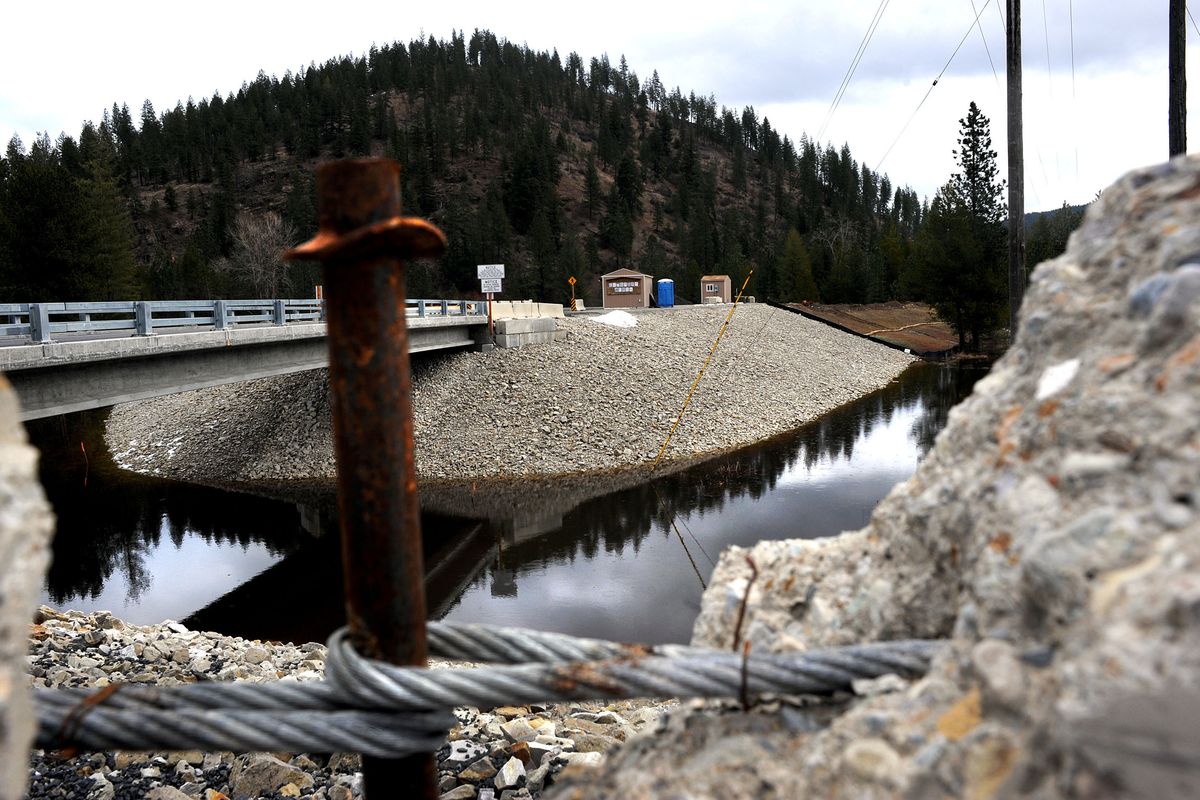Hazardous dumping site debate raised
Archaeologists question survey work that allowed repository near Old Mission

A hazardous waste repository built two years ago near Old Mission State Park has stirred debate among archaeologists about whether federal and state officials complied with historic preservation laws on the project.
The Old Mission, built by Jesuit priests and ancestors of the Coeur d’Alene Tribe in the 1850s, is both a national historic landmark and Idaho’s oldest standing building. Nearby, a 14-acre repository accepts contaminated soil from the cleanup of old mine sites in the Coeur d’Alene Basin.
“The East Mission Flats Repository should never really have been located there,” said Robert Weaver, a Seattle archaeology consultant who wrote his doctoral dissertation on the Old Mission and recently helped preserve artifacts from Sandpoint’s original town site during the U.S. Highway 95 Byway project.
Weaver said the repository spoils the view of the valley, which contained a settlement of Coeur d’Alene Indians who lived near the mission and raised crops along the river. He also said the archaeological survey work done before construction wasn’t rigorous enough.
“They sited the repository where you might expect to find farm fields,” he said. “There’s the possibility of a mission-related Native American dwelling and farmstead. But if you put a mound of material over an archaeology site that you haven’t even tried to identify, then you’ve essentially removed it for any future investigation or interpretation.”
State, federal and tribal officials disagree that the survey was inadequate. The debate will continue later this month at the Society for American Archaeology’s national conference in Sacramento.
One of the speakers, John Parker, said he plans to use the East Mission Flats Repository as an example of how the U.S. Environmental Protection Agency isn’t complying with the National Historic Preservation Act. Some of the nation’s most polluted sites are also rich in history, said Parker, an archaeologist from Lucerne, Calif.
A British fort built during the French-Indian Wars was damaged during a Hudson River Superfund cleanup because proper survey work wasn’t done ahead of time, according to Parker. On the Elem Indian Reservation in California, he said, an archaeological site was destroyed during an EPA removal of mercury-laced soils.
“I understand their mission is to remove toxic waste to make places safer and healthier for us,” Parker said. “That can all take place and still preserve our culture’s heritage, historic sites and historic places.”
At East Mission Flats, state and federal officials said that extensive archaeological surveys were done before construction started. Marc Stewart, the Coeur d’Alene Tribe’s spokesman, said tribal officials were more than satisfied with the process.
“In this instance, EPA bent over backwards to listen to and work with the tribe over its concerns on that site,” Stewart said.
Last year, the Advisory Council on Historic Preservation in Washington, D.C., sent a letter to EPA, saying the East Mission Flats work didn’t appear to meet Section 106 of the Historic Preservation Act, which requires federal agencies to take into account how their efforts affect historic properties, and allow the Advisory Council a chance to comment. As a result of that letter, EPA set up a working group to create protocol for dealing with other historic sites in the Coeur d’Alene basin that might be affected by cleanup activities, said Cami Grandinetti, an EPA superfund manager.
EPA delegated East Mission Flats archaeological work to the Idaho Department of Environmental Quality, but Grandinetti said she’s confident the work met the law’s intent.
Lee Sappington, a University of Idaho professor and archaeologist, was chosen to assess the site because of his prior work with the Coeur d’Alene Tribe, said Andy Mork, DEQ’s repository coordinator. Sappington surveyed the site before construction started and was present during major excavations, Mork said. “He found no cultural resources whatsoever.”
The National Park Service, the Coeur d’Alene Tribe and Idaho’s state historic preservation officer worked closely with DEQ on the project, Mork said.